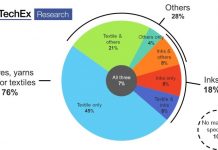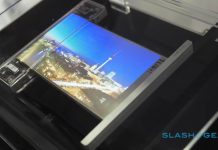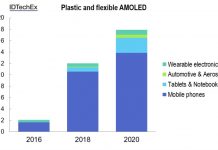 The LCD vs e-ink eyestrain debates have been going on for some time, but one factor in the difference is the refresh rate. E-ink sits still like paper once it’s set. It doesn’t refresh until you turn the page. LCD, on the other hand, refreshes dozens of times per second, whether it’s on a TV, a monitor, or a tablet. But that could be about to change.
The LCD vs e-ink eyestrain debates have been going on for some time, but one factor in the difference is the refresh rate. E-ink sits still like paper once it’s set. It doesn’t refresh until you turn the page. LCD, on the other hand, refreshes dozens of times per second, whether it’s on a TV, a monitor, or a tablet. But that could be about to change.
Nikkei Electronics’s “Tech-On!” reports on a new LCD display panel technology under development that will reduce the necessary refresh rate from 60 per second to 1 per second or less when showing still images. That could include photos—but it could also include web or e-book pages. (Found via Gizmodo.)
"Because the same image can be viewed for as long time as possible like a natural object or paper, it is possible to reduce eye strain," [its developer Semiconductor Energy Laboratory Co. Ltd.] said. "The new panel refreshes an image in every five seconds."
It also features a backlight provided by red, green, and blue LEDs, and the blue LEDs will not emit light whose wavelength is 420nm or less, which is supposedly harmful to human eyes.
The one thing that puzzles me a bit about the article is that it seems to assume that the refresh rate does cause eyestrain. However, in a NY Times article I covered in 2010, experts said that the refresh rates of modern LCDs don’t actually cause undue strain:
“The new LCDs don’t affect your eyes,” [HP Information Surfaces Lab director Carl] Taussig said. “Today’s screens update every eight milliseconds, whereas the human eye is moving at a speed between 10 and 30 milliseconds.”
So it could be there’s less that’s actually revolutionary about this display than people might think.
Still, the idea of an LCD display that causes less eyestrain is very appealing. I’ve been doing a lot more e-ink reading myself, and the only thing I don’t like about it is that I can’t do it in the dark. On the other hand, if I could do it on a low-refresh glowy LCD screen, that could be the best of both worlds.
































For a long time, I only read on my iPad, because the Kindle had too dark a background for my taste. The Paperwhite has changed that, and I have to say I find it a lot more restful than an LCD.
Somebody said it’s because backlit pixels are not placed in space, with a specific distance to your eyes, like frontlit ones are.
What causes eyestrain is dithering on low res screens, too bright screens and those awful reflective screens where you can see at the same time your face and the text. It’s mostly lack of local contrast around text and difficult eye focusing that cause eye-strain.
The screen refresh argument is total bullshit with LCD related technologies, as LCD are not blacking out when refreshing. They’re only changing state in a minimal way, there’s no total refresh (fade to black, then new picture). Actually you cannot perceive refresh rate at all on a static image on LCD.
On the contrary, CRT were blacking out between refresh cycles. It’s only because of persistence of vision that the image looked somehow stable on high refresh rates.
“Actually you cannot perceive refresh rate at all on a static image on LCD.”
On a *good* LCD. I’ve had a couple of original Nook Colors, and the screens flickered like crazy even when everything on the screen was still. Others reported the same thing.
I’m all for low refresh, especially if it improves battery life. I mainly use tablets for reading PDFs, and if I could get the long battery life of an e-Ink reader with an LCD I’d be delighted.
Just check Apple’s forum for eye strain from LCDs, especially LEDs. There is portion of the population that gets severe eye strain from LED screens. Maybe it is dithering, maybe the dimming method, who knows. But the problem exists for some people.
Also EIZO and Benq advertise technologies that they claim wont hurt the eyes. So it seems there is a problem out there, in some cases the problem is severe for some people or just discomfort for other.
So i think there is a lot of room for development in modern backlight displays to be able to read like someone does with a book or e-ink without backlight.